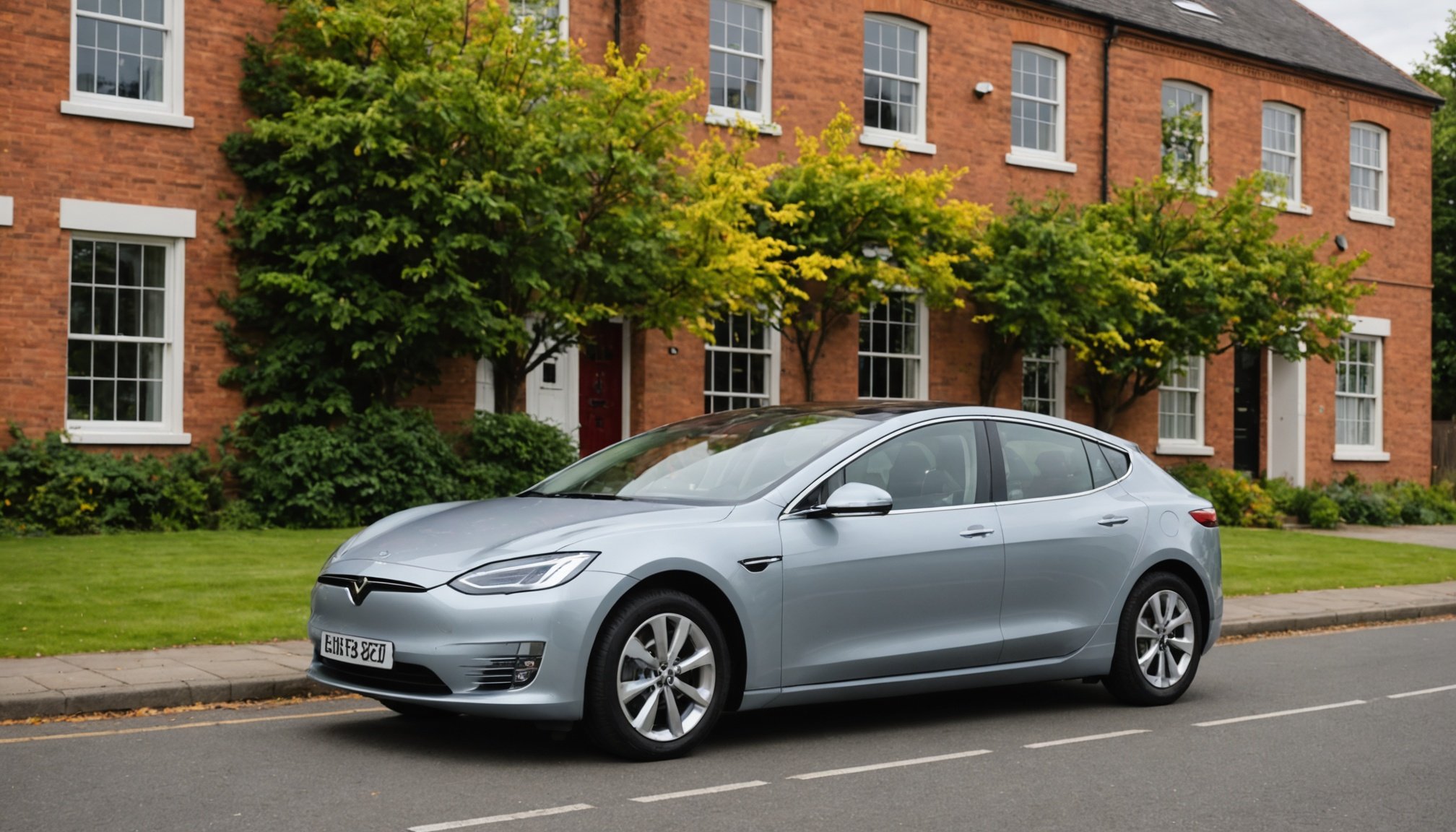Overview of Seasonal Variations in the UK
The UK experiences four distinct seasons: spring, summer, autumn, and winter. Each has unique characteristics that impact daily life and activities. Spring, from March to May, witnesses burgeoning flowers and mild temperatures. The warmth of summer, spanning June to August, brings higher temperatures, often reaching upwards of 25°C. Autumn, September to November, is marked by falling leaves and a gradual decline in temperature. Finally, winter, from December to February, can bring cold spells with temperatures occasionally dipping below freezing.
Extreme weather events have become more frequent, impacting the weather patterns noticeably. Heavy rainfall and flooding during winter months can disrupt transport and damage infrastructure. Conversely, heatwaves in the summer lead to potential health risks and water shortages. These temperature variations are critical for planning and preparedness strategies across the UK.
This might interest you : What are the environmental impacts of different types of fuel used in UK vehicles?
For electric vehicles (EVs), seasonal changes directly affect performance. Colder winters can reduce battery efficiency, diminishing driving range and increasing recharge times. Likewise, excessive heat in summer can impact battery health, although less severely than the cold. Understanding these weather impact patterns enables EV owners to optimise charging habits and manage energy use efficiently throughout the year.
Electric Vehicle Battery Technology Basics
Understanding lithium-ion batteries is fundamental for grasping EV battery technology. These batteries, commonly used in electric vehicles, operate through an electrochemical process. They consist of an anode, cathode, separator, electrolyte, and a pair of current collectors. A flow of lithium ions from the anode to the cathode facilitates the movement of energy, which is stored or discharged to power the vehicle.
Topic to read : Maximizing Your Electric Vehicle Experience: Tips for Navigating the UK”s Expanding EV Charging Station Network
Battery efficiency is measured by multiple performance metrics. Two essential metrics include energy density and discharge capacity. Energy density refers to the amount of energy a battery can store relative to its weight or volume; higher density usually translates to longer driving ranges for electric vehicles. Discharge capacity, on the other hand, indicates how much electricity the battery can deliver before needing to be recharged.
Operating conditions are crucial for maintaining optimal performance. Lithium-ion batteries typically perform best within a specified temperature range, often between -20°C to 60°C. Deviating from these thresholds can affect both the lifespan and performance of the battery. Knowing these operational parameters ensures electric vehicles remain efficient and reliable, even under varying environmental conditions. This understanding makes it possible for manufacturers and users to maximize the battery’s potential, improving overall vehicle efficiency.
Impact of Temperature on Battery Efficiency
Temperature significantly affects battery performance in electric vehicles (EVs). Batteries are less efficient in temperature extremes. In cold weather, performance drops due to increased internal resistance, reducing energy flow. This results in slower charging and diminished driving range. Conversely, high temperatures can hasten chemical reactions within batteries, causing them to degrade faster, potentially shortening their lifespan.
Temperature Effects on Battery Life
Research indicates that temperatures below 20°F (-6°C) can decrease an EV’s range by up to 40%, highlighting the impact of cold weather performance. Real-world tests in frigid climates, like Norway, support these findings. Conversely, prolonged exposure to heat can lead to thermal runaway, where cells overheat, expanding and risking damage. Studies reveal that at temperatures above 86°F (30°C), battery lifespan can be reduced by up to 50% when unprotected.
Manufacturers mitigate these effects by implementing thermal management systems to maintain optimal battery temperatures. These systems balance cooling and heating during extreme conditions ensuring efficiency. However, the user must be aware of potential impacts, as no system can fully negate extreme temperature effects.
Seasonal Weather Conditions and Their Effects
Understanding how different weather conditions impact electric vehicle (EV) operations is crucial for ensuring optimal performance. Rain, snow, and humidity each have unique effects on EVs. Rain, for instance, can lead to slippery roads, which might affect traction, requiring EVs to use more energy for the same distance. Such conditions can hinder charging efficiency by affecting the connection quality at charging stations.
Snow further complicates operations with lower ambient temperatures. This can reduce charging speed and increase energy consumption due to the heater usage, which is often necessary in colder climates. Additionally, snow-covered charging stations pose accessibility issues, especially if the snow is heavy or left uncleared.
High humidity can also have a significant climate impact on an EV’s battery system. It might induce corrosion in the vehicle’s electrical components, affecting long-term charging efficiency and vehicle performance.
To navigate these challenges, EV owners should adopt seasonal-specific practices. During rainy seasons, ensure that charging ports are dry before connecting. In snowy conditions, pre-heating the battery before charging helps maintain efficiency. Finally, regularly inspect electrical components for signs of corrosion in humid climates to minimise potential issues. Understanding and adapting to seasonal weather variations is essential for extending the lifespan and performance of an electric vehicle.
Regional Comparisons and Global Insights
Understanding the global EV performance involves comparing regional battery performance and usage. Countries with diverse climates, such as the UK and Norway, often report differing battery efficiencies. For instance, EVs in colder climates might experience reduced battery performance, affecting overall vehicle range. This prompts manufacturers to enhance battery technology for climatic variations, ensuring consistent performance.
Through comparative analysis, we learn how international standards address these challenges. Studies reveal that global EV markets adapt by prioritising thermal management systems in cars, which maintain optimal battery temperatures. This adaptation is crucial in countries like Canada and Russia, where harsh winters can significantly impact performance.
Insights from such studies highlight the advantages of adopting solutions that have been successful elsewhere. By exploring methods, like heating systems or heat pumps used in vehicles globally, the UK market can optimise EV usage under various climatic conditions.
Learning from international best practices ensures that nations can implement strategies proven effective in different environments. With these insights, regions can enhance their EV infrastructure, aligning with international standards to offer users reliable and efficient electric vehicles year-round.
Expert Opinions on Optimizing Battery Performance
To ensure optimal battery performance throughout the year, especially in different seasons, it is vital to heed advice from industry experts. Maintaining your electric vehicle’s battery health can vary with the changing climate.
In winter, experts suggest pre-conditioning your vehicle. This involves heating the battery before starting your journey, which enhances efficiency by warming it to the ideal operating temperature—helping to preserve electrical capacity and range. Another winter strategy involves parking in a garage or sheltered area to protect the battery from extreme cold.
Summer months demand different tactics. Experts recommend parking in the shade and avoiding high-temperature charging as much as possible. Charging habits influence battery longevity significantly. Slow charging overnight as opposed to rapid charging can reduce thermal stress on the battery, prolonging its lifespan.
It’s crucial to develop aware charging habits too. For instance, electric vehicle specialists highlight the importance of charging up to only 80% for daily use unless a long trip requires a full charge. This prevents battery wear over time. Grasping these performance tips ensures your vehicle remains efficient and reliable, regardless of the season.
Practical Implications for Electric Vehicle Owners
Navigating EV ownership through changing seasons requires various strategic adaptations. Seasonal driving habits affect the range and efficiency of electric vehicles, and understanding how to manage these fluctuations is crucial for EV owners.
Practical Tips for Seasonal Driving
During colder months, the efficiency of your EV battery can decrease, so it’s essential to precondition your vehicle while it’s still plugged in. This ensures the battery is at an optimal temperature before driving, helping to maintain range. In contrast, summer heat can lead to battery overuse through increased AC demands; therefore, parking in shaded areas or using reflective sunshades can be beneficial.
Future Trends in EV Battery Technology
Advancements in EV battery technology promise improved performance regardless of the season. New developments focus on thermal management systems that regulate battery temperature more effectively. This emerging technology aims to minimise seasonal inefficiency, providing more consistent performance.
Community Resources and Support
Many EV ownership communities offer invaluable resources and support for navigating seasonal challenges. Joining forums and local EV groups can provide practical insights and tips. These networks also offer updates on technological advancements and promote shared experiences among EV owners, making seasonal transitions smoother and more manageable.
Overview of Seasonal Variations in the UK
In the UK, the seasonal weather patterns are quite distinctive, impacting everything from fashion choices to vehicle performance. The UK climate is known for its changing seasons, with winter typically bringing colder temperatures and potential snowfall, while summer often offers milder, more manageable conditions. These cycles result in temperature fluctuations that can significantly influence vehicle performance.
Winter can present challenges such as icy roads and the need for winter tyres, affecting the driving experience. The cold weather can also impact vehicle battery efficiency, highlighting the importance for electric vehicle owners to understand these seasonal changes. Colder temperatures tend to reduce battery range, thus requiring more frequent charges.
Spring and autumn, with their milder and variable conditions, can still impact vehicle maintenance, with shifting temperatures affecting tyre pressure or fluid viscosity. In summer, the warmth may pose risks of overheating, especially during traffic jams or long trips.
Understanding the local climate is vital for vehicle maintenance and performance. Electric vehicle owners, particularly, must account for seasonal impact on vehicles, adjusting charging and maintenance routines to align with the fluctuating temperatures. Proper preparation ensures resilience against seasonal challenges, enhancing safety and efficiency on the road.
Impact of Temperature on Battery Performance
Temperature plays a critical role in battery efficiency and overall EV performance. Understanding how both high and low temperatures affect these elements helps improve vehicle reliability and battery longevity.
Temperature Effects on Battery Efficiency
Batteries operate best within a moderate temperature range. High temperatures can increase battery efficiency temporarily by enhancing chemical reactions. However, prolonged exposure to extreme heat can lead to quicker degradation and reduced lifespan.
Conversely, low temperatures slow down chemical reactions, reducing EV performance and driving range. This is particularly challenging in colder climates, where electric vehicle users may notice diminished battery capacity.
Scientific Insights
Numerous studies confirm temperature effects on batteries. Research indicates that a decrease in temperature from 25°C to 0°C can drop battery efficiency by up to 50% in some cases. Understanding these dynamics helps in designing better thermal management systems to mitigate adverse effects.
Thermal Management Systems
Modern electric vehicles often incorporate advanced thermal management systems. These systems regulate battery temperature, maintaining optimal efficiency and prolonging lifespan. By keeping temperatures within an ideal range, these systems ensure robust and reliable EV performance across varying climatic conditions.
Charging Habits Across Seasons
Charging an electric vehicle (EV) efficiently requires adapting charging practices to seasonal changes. In winter, lower temperatures can slow down charging speeds and reduce battery performance. It’s advisable to park your EV in a garage when possible, maintaining a consistently warmer environment for the battery. Moreover, preheating the vehicle while it’s still plugged in reduces the energy drawn from the battery.
In contrast, summer temperatures can accelerate charging but may lead to potential overheating. Hence, ensuring that your EV is parked in a shaded area or using sunshades could protect the battery.
EV Charging Tips
-
Winter Considerations: Utilise charging infrastructure that offers shelter and additional warmth when possible. Plugging in more frequently can also help maintain battery efficiency.
-
Summer Strategies: Adjust your charging schedule to off-peak hours when temperatures are cooler, preventing battery overheating and taking advantage of potentially lower electricity rates.
Accessibility to charging infrastructure varies with the season, impacting overall efficiency and cost. Therefore, understanding and implementing seasonal adaptations can significantly enhance the longevity and performance of an EV. These tips provide a convenient, solution-oriented approach to managing your EV charging needs year-round.
Real-World Case Studies
In the continuously evolving landscape of electric vehicles (EVs), user experiences provide valuable insights into the real-world performance and reliability across different seasons. Compilation of user-reported experiences highlights how EVs perform in varying weather conditions, often revealing strengths and areas for improvement that are not always visible in controlled tests. While some users report excellent battery performance and range in warm climates, others note significant range reduction in colder environments.
Conducting a comparative analysis of different EV models under seasonal stress offers further insight. For instance, certain models exhibit greater efficiency in retaining charge during winter months, while others excel in temperature extremes by utilizing advanced thermal management systems. These differences underscore the importance of understanding each model’s unique characteristics and how they adapt to temperature fluctuations.
Moreover, insights from manufacturers play a crucial role. They often provide performance reports detailing how their vehicles handle seasonal variations, including updates and improvements in battery technology and energy recovery systems. By understanding these real-world EV case studies, prospective buyers and enthusiasts can make more informed decisions about the suitability of a particular model for their specific climatic challenges. This approach ensures that firsthand experiences and technical insights go hand-in-hand in shaping the future of electric vehicles.
Best Practices for Maximizing Battery Lifespan
Navigating the world of electric vehicles offers thrilling possibilities, yet maintaining optimal battery health requires attention. Adopting effective battery maintenance practices is crucial for extending your EV’s life. Here are some essential tips EV users can utilize to enhance battery lifespan significantly.
Firstly, always avoid charging your EV to 100% unless absolutely necessary, as batteries endure less stress when maintained between 20% and 80%. This not only contributes to lifespan enhancement but also maintains the vehicle’s daily performance. Moreover, with seasonal changes, adapting your routines can make a significant impact. In colder months, it’s wise to precondition the car battery before use; this involves heating the battery while the car is still plugged in to avoid using on-road charge.
Climate impacts remain a common pitfall many EV users overlook. Extreme temperatures can degrade battery performance yet several preventive measures can be taken. For instance, parking in shaded areas during scorching summers or keeping the vehicle plugged in a well-insulated garage during frigid days can prevent unwanted thermal stress.
By adhering to these EV user tips, you can safeguard your investment, maintaining an efficient and productive vehicle throughout the year.
Future Trends in EV Technology and Seasonal Adaptation
Emerging technologies in future EV technology focus increasingly on enhancing innovation in batteries to cope with diverse climates. As climate conditions fluctuate more than ever, optimizing battery efficiency is crucial. Advances like solid-state batteries promise higher energy density and faster charging capabilities. This technology excels at maintaining performance across a range of temperatures, providing a solution to the common woes of current lithium-ion systems in cold or hot climates.
The industry is witnessing a shift towards climate resilience in vehicle design. Manufacturers are exploring materials and constructions that better insulate internal systems from external temperature changes. For instance, thermal management systems are being developed to maintain optimal battery temperature automatically, which could potentially prevent performance degradation and extend battery life.
Looking ahead, predictions indicate that future EV technology will increasingly incorporate adaptive features. As climatic patterns continue to change, vehicles might integrate smarter energy management systems. Such features could autonomously adjust power usage according to external conditions, thereby improving efficiency. By focusing on innovation in batteries and climate-adaptable designs, the electric vehicle industry aims to create more resilient vehicles prepared for future environmental challenges.











